The LG G7 Review: A Rushed Attempt?
by Andrei Frumusanu on August 9, 2018 11:00 AM EST- Posted in
- Smartphones
- LG
- Mobile
- LG G7 ThinQ
- LG G7
Camera - Architecture & UI
The main camera on the LG G7 differs very little from what the V30 incorporated. The sensor is still a Sony IMX351 which offers an active pixel matrix of 4656 x 3496 (16MP). The downside here is that this is a rather small 1/3.09” sensor which results in 1µm pixel pitches. As this is the same sensor as used in the LG V30 – I’m not too worried about the performance as we saw very competitive results from the sister flagship. The lens has an f/1.6 aperture, a viewing angle of 70°, and the module supports an OIS mechanism.
The wide angle camera is one of LG’s flagships’ distinguishing feature as we saw essentially no other mainstream vendor adopt the same type of camera, with most of them opting for telephoto lenses in their secondary modules. The G7 continues the trend here, but fine-tunes the wide-angle camera a bit. We’re seeing the exact same sensor as on the main camera, but the lens system has changed as this is now an f/1.9 lens with a slightly reduced wide viewing angle of 107° rather than the 125° optics found in the G6 and V30. The reduced viewing angle is meant to reduce the more extreme cases of fish-eye effect and also reduce chromatic aberrations on the edges of the image. The wide-angle module doesn't sport OIS.
Camera software wise, there’s little change from what we saw on the updated V30 firmware – both camera applications offer a wide variety of features without being cumbersome to the capturing experience. The AICam which was introduced in the V30s and backported to the V30 is also part of the G7’s camera. Unfortunately as we’ll see in the following evaluation the results of the AICam capture results are quite disappointing and are no better than a gimmick, resulting in mostly detrimental image quality in most scenarios.
Camera - Daylight Evaluation
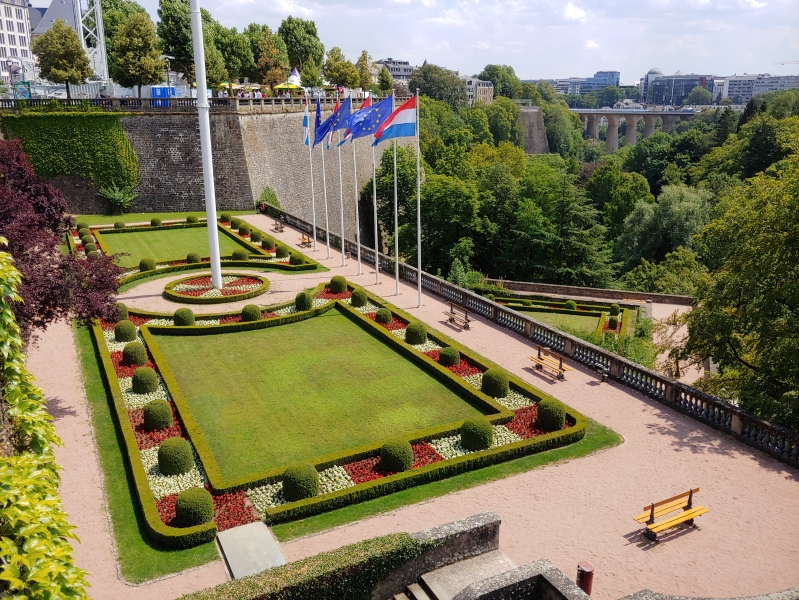
[ G7 ] - [ G6 ] - [ V30 ]
[ Mi MIX 2S ] - [ Pixel 2 XL ] - [ Mate 10 ] - [ P20 ]
[ OnePlus 6 ] - [ P20 Pro ] - [ S8 ] - [ S9+ ] - [ iPhone X ]
In the first scenario the G7 offers a very similar exposure and colour balance to the G6 and V30 – although it’s ever so slightly more exposed at 1/1042s versus the V30’s 1/1207s take. The G7 offered slightly lower dynamic range through more reduced highlights and darker shadows than say the S9 or OnePlus 6, but the overall result was still very good and among the top performers.
In terms of detail retention there’s however some glaring differences between the G7 and the V30. If one opens the images in their native resolution, it's plainly visible that the G7 has vastly different processing in place. The result is a watercolour-like effect on all details throughout the scene and most blatantly visible in the leaves of all greenery throughout the picture. The effect is also very notable on the edges of objects throughout the picture, and is seemingly applied non-discriminately to almost all scenarios.
Switching over to the wide-angle shot, we see the differences between the G6 and V30’s modules and the G7’s new shooter: the G7 is able to capture a more natural wide dynamic range, capturing more details in the shadows. I do prefer the V30’s better retention of highlights as it’s a more accurate representation of the very bright conditions of the scene.
An interesting phenomenon that we’ll see more often today, is an odd behaviour of the camera and its processing: When shooting pictures rapidly in succession, the camera software seems to fall behind in terms of producing processed images, and the result is closer to the result of what the sensor is actually capturing. This can be seen in the versus comparison; the latter shot was shot sequentially within the same second. This is extremely valuable as we can directly see what kind of processing is done on the picture, and what’s obvious is that there’s a noise reduction filter which smudges the details, as well as the effect of a sharpening filter applied on top. There’s also some software HDR processing going on in attempting to bring out more highlights in the picture.
The noise reduction filter in particular is very destructive and it makes it easier to understand what’s happening on the main camera photo samples.
Of course, the fact that the camera’s processing suddenly doesn’t work when capturing pictures in quick succession is something that shouldn’t be happening in the first place. I’ve actually encountered the same behaviour on the V30 in past camera evaluations, but now it looks that this is very much a characteristic behaviour of LG’s camera software.
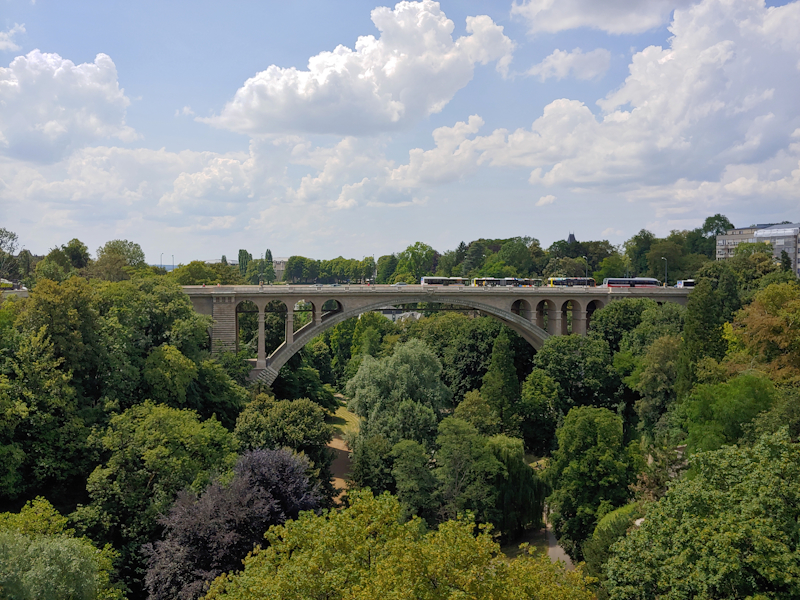
[ G7 ] - [ G6 ] - [ V30 ]
[ Mi MIX 2S ] - [ Pixel 2 XL ] - [ Mate 10 ] - [ P20 ]
[ P20 Pro ] - [ S9+ ]
[ OnePlus 6 ] - [ iPhone X ]
The next shot the G7 doesn’t fare well at all. First of all the phone was extremely inconsistent on deciding on the exposure and processing. In the first auto shot the camera does a relatively longer exposure at 1/1205s which is actually longer than the V30’s 1/1884 take. The problem is that the software falls prey to typical over-processing and destroys most highlights in the scene, resulting in a very flat image with very little remaining dynamic range. Compared to the V30 shot, the G7 performs terribly here.
In the auto and , the G7 severely underexposes. Even worse is that it couldn’t decide between HDR processing or not, and this wasn’t an issue of quick subsequent shots as described earlier.
Detail retention was just abysmal, this is essentially the same camera hardware as on the V30 yet what the G7 outputs couldn’t be more further away from the sister flagship’s shot.
Using the AICam in this scene amounts to nothing more than a simple colour filter and brings no advantage whatsoever.
Unfortunately what was said about the main camera also applies to the wide-angle lens, as the camera couldn’t manage to maintain higher levels, having worse results than the G6 and particularly the V30. The AICam here also doesn’t help beyond an increase in colour saturation.
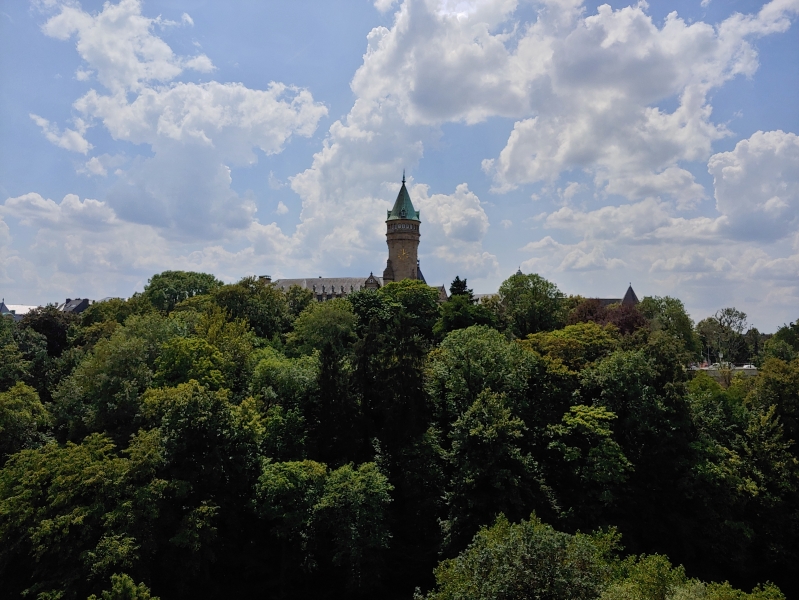
[ G7 ] - [ G6 ] - [ V30 ]
[ Mi MIX 2S ] - [ Pixel 2 XL ] - [ Mate 10 ]
[ P20 ] - [ P20 Pro ]
[ OnePlus 6 ] - [ S9+ ] - [ iPhone X ]
This is admittedly a tough shot as we’re facing against the sun, but there’s several devices which do manage good results. The G7 produces again a far too dark shot, crushing the dynamic range of the picture. Detail retention suffers the same massive issues as previous scenes.

[ G7 ] - [ G6 ] - [ V30 ]
[ Mi MIX 2S ] - [ Pixel 2 XL ] - [ Mate 10 ]
[ P20 ] - [ P20 Pro ]
[ OnePlus 6 ] - [ S8 ] - [ S9+ ] - [ iPhone X ]
This last shot with a lot of green landscape is again a large miss on the part of the G7. Note the stark difference in processing between the G7 and V30, with the latter producing a vastly superior result. Detail retention is again disappointing.
To be noted here is the difference of the AICam effect on the V30 versus on the G7, the latter uses a more heavy-handed approach to the effect while the V30’s result is still pleasing.
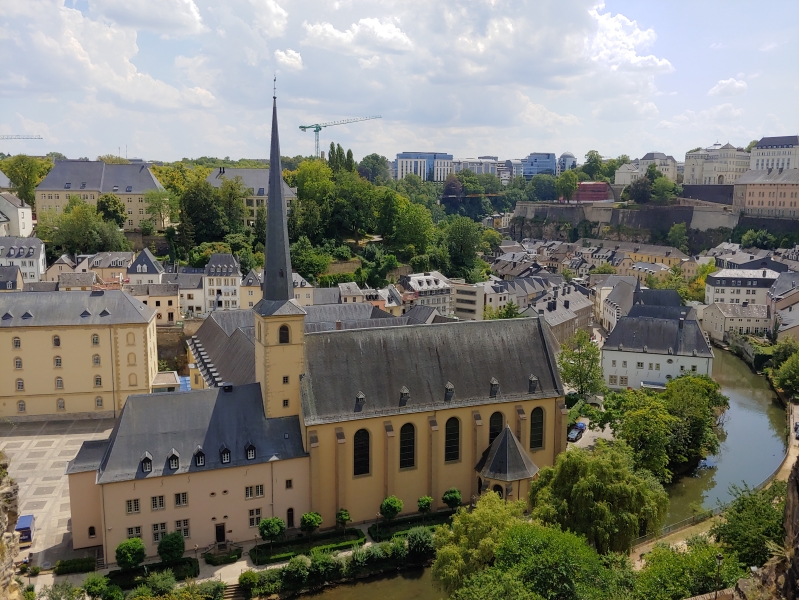
[ G7 ] - [ G6 ]
[ V30 ] - [ Mi MIX 2S ] - [ Pixel 2 XL ] - [ OnePlus 6 ]
[ Mate 10 ] - [ P20 ] - [ P20 Pro ] - [ S8 ] - [ S9+ ] - [ iPhone X ]
The abbey shot is less harsh for the G7 when it comes to exposure, and the result is ok, but it’s still a regression in dynamic range compared to the V30. I don’t have to mention detail retention as the G7 just blurs out the roof tiles, while the V30 actually had one of the best results among current generation flagships.
This scene was probably the single worst for the AICam on the G7 as the resulting colours are just outright comical both in the main camera as well as the wide shot. The same AICam on the V30 resulted in a very light touch in terms of processing and did manage to make for a more subjectively pleasing sky colour.
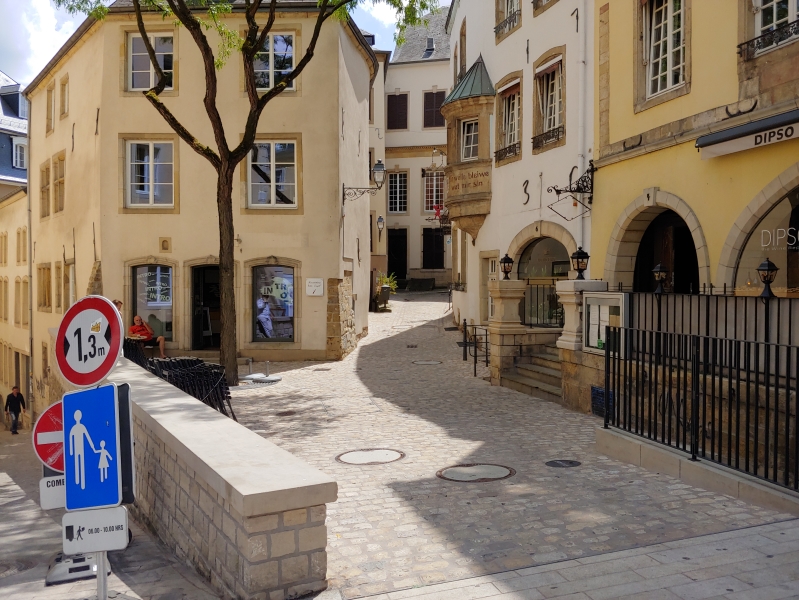
[ G7 ] - [ G6 ] - [ V30 ] - [ Mi MIX 2S ] - [ Pixel 2 XL ]
[ Mate 10 ] - [ P20 ] - [ P20 Pro ] - [ OnePlus 6 ]
[ S8 ] - [ S9+ ] - [ iPhone X ]
The alley shot for the G7 was more forgiving and overall we’re getting good colour balance and exposure. Although a lot less immediately visible, the G7 still loses out detail to the V30 due to its processing.
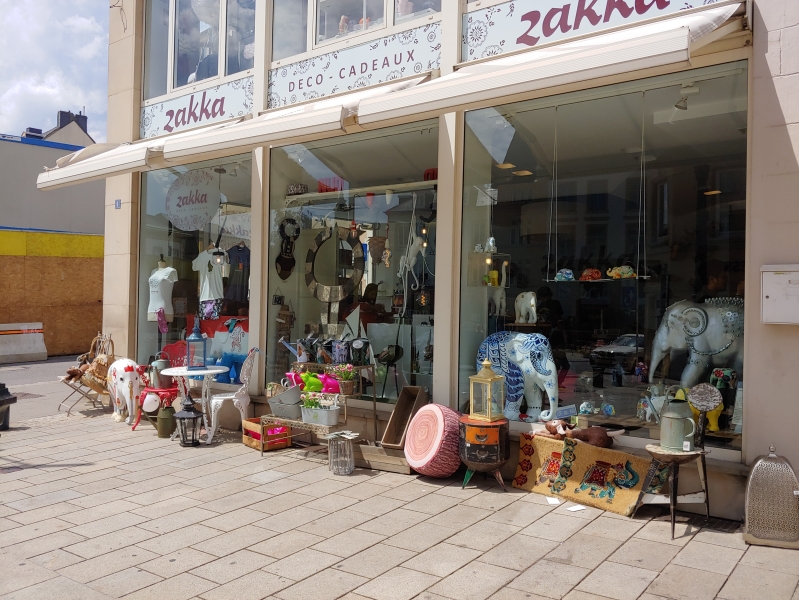
[ G7 ] - [ G6 ] - [ V30 ]
[ Mi MIX 2S ] - [ Pixel 2 XL ] - [ Mate 10 ] - [ P20 ] - [ P20 Pro ]
[ OnePlus 6 ] - [ S8 ] - [ S9+ ] - [ iPhone X ]
The shop front scene is yet another example of how the G7 differs from the V30. Both units use the same exposure at 1/1471s, yet the V30 manages to be ever so slightly more pleasing with its HDR decisions.
Detail wise it’s another disaster for the G7 as it uses needlessly a harsh spatial noise reduction filter. Notice the carpet on the lower right as its details disappear in the G7 shot.
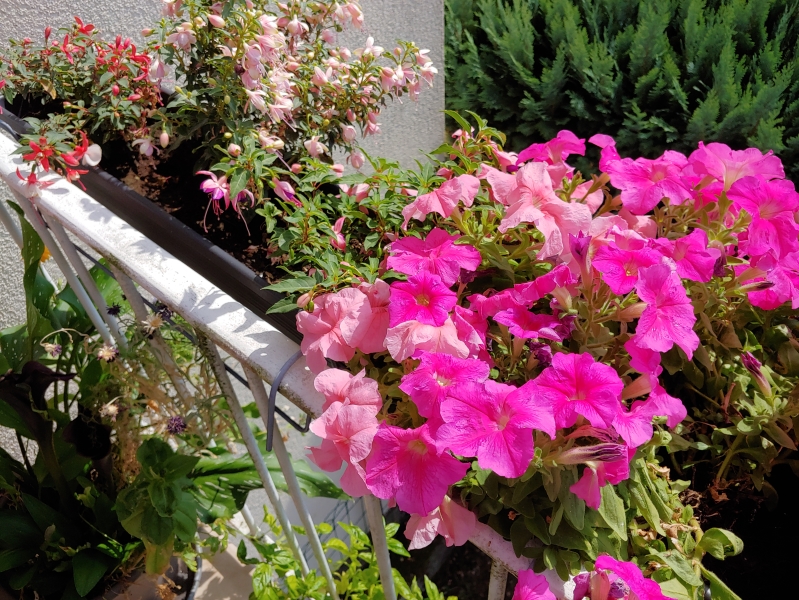
[ G7 ] - [ G6 ] - [ V30 ] - [ Mi MIX 2S ] - [ Pixel 2 XL ]
[ Mate 10 ] - [ P20 ] - [ P20 Pro ] - [ OnePlus 6 ]
[ S8 ] - [ S9+ ] - [ iPhone X ]
The last scene can be used as an analysis on the behaviour of dynamic range retention in scenes where’s there’s a prominent colour reaching the limits of the camera’s sensor. In this case it’s the red petunia flowers in the scene. The best behaving sample from a phone is seemingly the S9+. Again the G7 regresses over the V30 as it compresses the dynamic range needlessly, and this is plainly visible when looking at a histogram of both phone’s pictures.
It’s hard to tell at first glance because of the short focal length of the shot, but again the G7’s details are again blurred out. Best example is the stem hairs on the petunias which just vanish in the G7’s pictures.
Daylight pictures conclusion
Overall in terms of daylight pictures, the G7 was a massive disappointment. When I first started sorting out the images from the phones I couldn’t understand what was wrong with the G7’s samples as I thought I inadvertently shot in a lower resolution or messed up some setting. Re-trying some shots in isolated conditions this is was indeed what the G7 produced. In the past we’ve had some phones which had hardware faults so maybe the phone wasn’t focusing correctly? Looking at sample shots of other review websites confirms that it wasn’t an issue of my unit alone.
Under daylight conditions, the G7 is a regression in every single aspect when compared to the V30. The resulting camera performance is maybe what would have been acceptable 3-4 years ago, but to showcase such poor exposure, consistency and detail in a 2018 flagship is just shameful.
The G7’s saving grace is that its wide-angle camera is still a unique feature and I do think it’s something that has a lot more uses than telephoto lenses, but again that’s something subjective and varies from user to user. The new sensor on the wide-angle helps a lot in terms of dynamic range and detail, however the sensor suffers from the same unbalanced exposures as the main camera.
All in all, what is most embarrassing for LG is that they had a really good camera in the V30 and its processing was extremely competitive, producing results competitive with the best 2018 flagships. The fact that it’s the same sensor and optics just boggles the mind as to what is going on.











69 Comments
View All Comments
anactoraaron - Thursday, August 9, 2018 - link
Another LG flagship device with a way too blue display. I believe I called that when it was announced. Next up, poor update policy (quarterly security updates or worse) and a usual $200-$350 price drop in 3 months.Integrazimmy - Thursday, August 9, 2018 - link
Seriously??? You're gonna complain about a problem that almost any smartphone has, and is yet correctable??? What a cry baby! Just like the Galaxy S9 came with a red tint, it was corrected through the rgb display settings. So too can you correct it on the LG G7! As for updates, I've gotten two updates since I got the phone! Yes, I got the G7 and it's an awesome phone! My question for most people hating on it is... Have you even spent time with it??? Then until you do, don't judge!!! I for one, am loving it!!! Specially since I got the BOGO deal at T-Mobile! Making my G7 better than most phones at about $425 each with tax!!! This whole talk about a price drop is what would be expected from someone who probably copies and pastes everyone else's opinions but their own. Smh!leexgx - Friday, August 10, 2018 - link
Seems like your compensating for something in that postExtraneus - Sunday, December 2, 2018 - link
Not really, no. Just addressing ignorance... Just like I'm addressing your rude condescending.Valantar - Friday, August 10, 2018 - link
That is an... excessive amount of punctuation. As leexgx says here, it seems that you're compensating for something. A bit of insecurity regarding the quality of a product you just spent $850 on, perhaps? Sure, for $425 it's a great deal (any SD845 phone at that price would be), but the review clearly shows that the blue tint cannot be corrected at all. A white point of 7800K is ridiculously high, and a DeltaE of more than 6 at its best is atrocious for a flagship phone in 2018. You might not care about accurate colors, and that's fine, but not even giving users the option is really, really bad. It speaks of either rushed development or just plain bad software development on LG's part. These lapses do not belong in flagship phones in 2018 - the market has moved beyond that quite a few years ago. If LG can't match the basic features of their competitors, they should either quit trying or start making an effort. It's a real shame too, 'cause that display seems great in most other regards (contrast is fantastic for an RGBW panel, brightness is astounding). The camera seems like it could be improved significantly too, given how much better the V30 with the same hardware is. I suppose it doesn't matter much if the pictures are only ever viewed on phone screens and never zoomed, but that's not for me. I'm too much into photography to settle for overprocessed, smudgy pictures.Alistair - Friday, August 10, 2018 - link
Maybe the reviewed screen was bad and the rest are not. It can vary wildly.Valantar - Saturday, August 11, 2018 - link
As the review points out, at this price point you really shouldn't have to play the LCD lottery. There's this thing called 'quality control', after all.frases lindas - Monday, August 13, 2018 - link
https://frases.bidmelgross - Friday, August 10, 2018 - link
No, most better smartphones don’t have this problem. Just look at th displays on the Samsung and Apple phones. Both are far better.jo-82 - Thursday, August 9, 2018 - link
I have a G6 and I'm stuck at Nougat, Sec Patch March 2017. LG is as well as Samsung one of the worst manufacturers you could possibly buy.